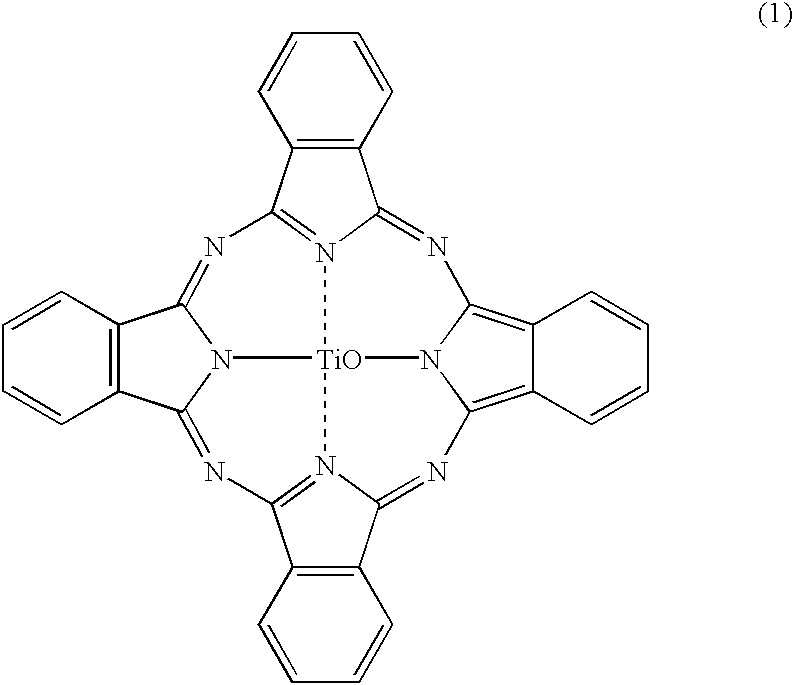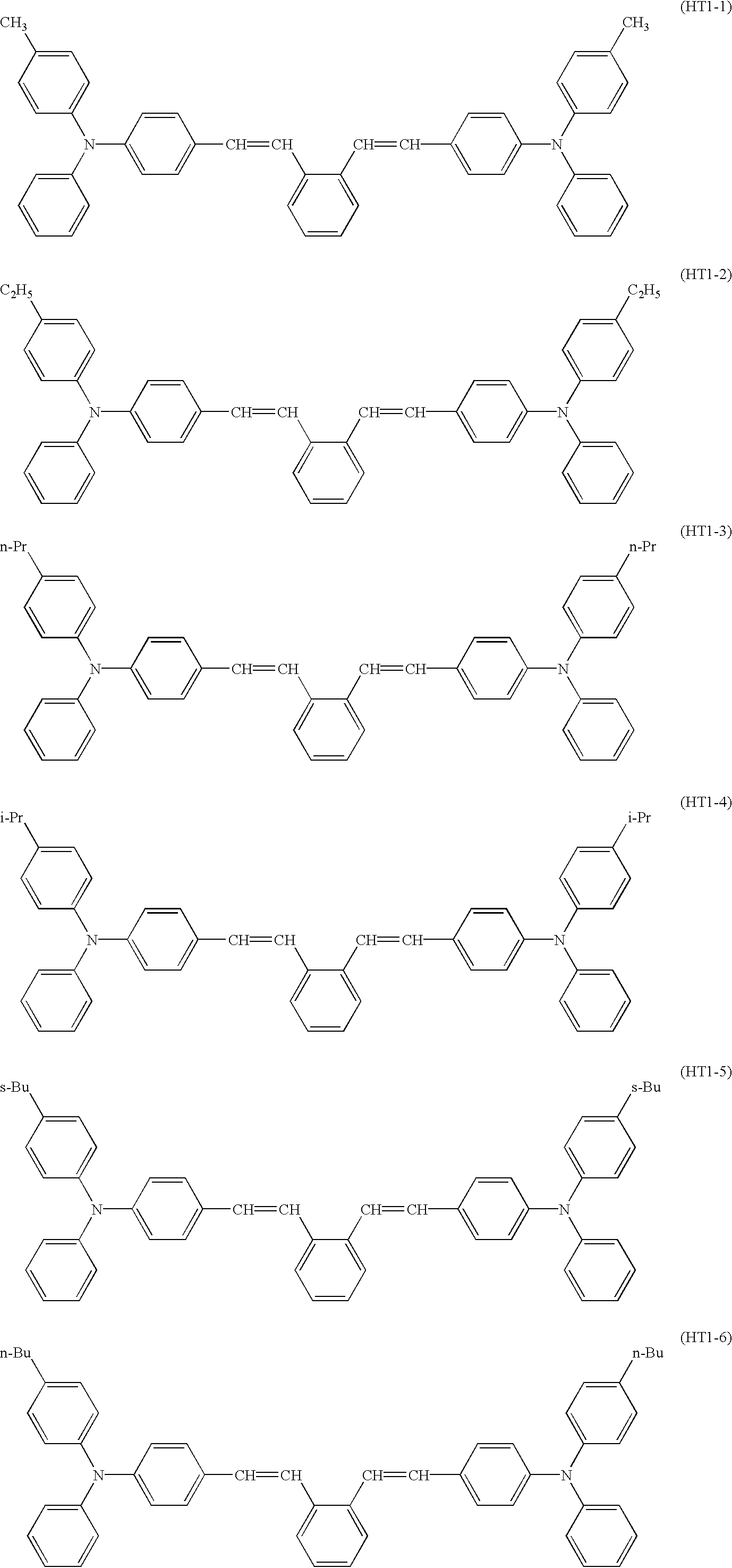On the other hand, as described previously, electrophotography image forming devices can achieve high quality images with high speed
processing, but currently, with faster
processing and improved
image quality, the device becomes large, heavy, and more expensive.
In particular, with high speed printers, high speed copiers, facsimiles, and color capable machines of these, and light printing presses and the like, there is the problem of increased size and number of the construction members.
However, the joining part is uneven in height and cannot be an image forming region.
This results in an increased cost for the entire device.
However, the seamless belt substrate itself is expensive, and this results in an increased cost for the photosensitive body.
In the prior art, the single layer photosensitive body has been considered to have an inadequate charge transport function.
The problems of
ozone generation and inadequate resolution and contrast still remain.
This belt type positively charged organic photosensitive body has a large number of advantages as described above, but as shown below, there are problems specific to the belt-type photosensitive body which uses a single-layer positively charged organic photosensitive layer.
The first problem is that although the sensitivity and responsiveness of the single- layer positively charged organic photosensitive body is sufficiently increased, in order to
mount this photosensitive body as a belt type into a high speed printer, high speed copier, fax
machine, and their color capable machines, as well as light printing presses, and the like, the photosensitive layer does not have enough strength to withstand the specific tension and compression force that is applied to a belt type photosensitive body.
As a result, its strength as a film is weak.
Therefore, when this belt type photosensitive body is installed and operated in a high speed
machine, color capable
machine,
printing press, and the like, it cannot withstand the tension which is specific to the belt type as it is stretched between a plurality of cylindrical rollers.
Cracks and breaks in the photosensitive layer can occur readily.
Furthermore, due to the compression force from members (for example, charging roller, charging
brush, developing roller, paper, transfer roller, cleaning blade, and the like) that contact this belt photosensitive body, cracks and bending in the photosensitive layer can also occur easily.
The second problem is that with a single-layer positively charged photosensitive body, the charge generating region resulting from
light exposure is concentrated near the photosensitive layer surface as compared to the laminated negatively charged type.
As a result, when used in the belt type, even with mechanical damage of minute cracks and the like generated at the photosensitive layer surface by external forces of tension and compression force and the like as described above, this can cause a large loss in the photosensitive body properties, and the photosensitive body cannot withstand
actual use.
However, the single-layer photosensitive body described in this publication does not have a structure that contains both titanyl
phthalocyanine, which increases the sensitivity, and an
electron transport agent.
As a result, the photosensitive body is of a low quality that does not satisfy the sensitivity and responsiveness needed for the high speed machines, color capable machines, and light printing presses as described above.
Normally, a corotron or a scorotron and the like are used for the charging
system, but when using a belt-type laminated negatively charged organic photosensitive body, which is currently the mainstream,
ozone generation from this corotron, scorotron, and the like become problematic.
The introduction of an exhaust
system as a way to respond to this problem results in a greatly increased cost for the device.
Furthermore, when using this belt-type laminated negatively charged organic photosensitive body, the
image quality does not achieve the resolution and contrast needed, especially for color output machines.
A third problem is that with high speed machines, color capable machines, and light printing presses that use the belt-type positively charged organic photosensitive body, this belt photosensitive body must have a
high tension between the rollers of 50N / cm or greater per unit length of the width of the belt photosensitive body.
A fourth problem is that in order to have smaller devices for these high speed machines, color capable machines, and light printing presses, and the like, there is a need for the outer
diameter of the cylindrical rollers to be 20 mm phi or less.
However, with the single-layer positively charged organic photosensitive body, particularly with the small
diameter rollers, there is a strong tension in the winding part of the roller.
Obvious cracks arise in the photosensitive layer, and this problem has not been solved.
 Login to View More
Login to View More  Login to View More
Login to View More 


